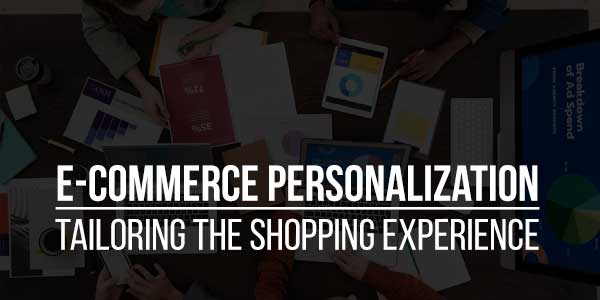
Think about walking into a store and being immediately greeted by a salesperson who knows precisely what you need, and points you toward that. That is the magic of e-commerce personalization. It leverages data and technology to create customized shopping experiences for every online visitor. Businesses can recommend items their customers love, highlight relevant promotions, and adjust prices according to their preferences as needed.
In this article, we’ll delve into the depths of e-commerce personalization, beginning with its benefits for businesses. We’ll also discuss understanding your customers, crucial components of e-commerce personalization, and the future of personalization. So, let’s begin!
Table of Contents
Benefits Of Personalization For Businesses:
Before you start learning about any strategy, you must know what benefits it brings to your business. So, let’s have an in-depth look at some of the benefits of personalization:
- Boosts conversions and sales
- Enhances customer engagement
- Builds brand loyalty
- Improves marketing ROI
- Reduces bounce rates and cart abandonment
- Drives up the average order value
- Provides important customer information
- Increases brand affinity and customer satisfaction
- Increases customer satisfaction and brand affinity
- Offers a competitive advantage
With such advantages, it is quite beneficial for businesses to utilize e-commerce personalization.
Understanding Your Customers:
Now, let’s focus on understanding your customers. It is vital for e-commerce personalization.
The Importance And Relevance Of Data:
Understanding your customers begins with data. Every click, browse, and purchase tells a story of your customer. Browsing history paints a picture of their interests, purchase behavior reveals buying patterns, and preferences highlight what attracts them to your brand.
The data will tell you about customer needs, motivations, and purchase triggers. Analyzing customer motivations lets you understand what drives them to make decisions. You’ll know what they prioritize: price, quality, convenience, or brand reputation. Examining purchase triggers allows you to identify common features of products added to the cart, thus helping anticipate future triggers. In the future, you can recommend similar items.
Tools For E-Commerce Personalization:
Collecting and analyzing so much data can be overwhelming. There are many tools and technologies to help you with this challenging task. Web analytics is one such tool. You can use it to track website interactions, revealing browsing patterns, popular pages, and user demographics.
Besides that, businesses should use data aggregation platforms to combine data from multiple sources like website analytics, CRM systems, and social media, providing a unified view of your customers.
AI (Artificial Intelligence) and ML (Machine Learning) tools and algorithms can analyze vast amounts of data to identify patterns, predict future behavior, and make real-time personalized recommendations.
Customer Data Collection:
Building a solid customer data profile starts with good data collection practices. With website tracking, you need to be transparent about cookie usage. Also provide customers with options to manage their data preferences. If you need to use forms to collect essential information, ensure they’re concise and relevant to avoid overwhelming users.
Furthermore, implement loyalty programs to incentivize data sharing with exclusive offers and personalized rewards. Social media data can also be collected while adhering to platform regulations and user privacy.
Data quality is critical. E-store owners must ensure accuracy, consistency, and relevance to avoid driving inaccurate personalization.
Customer Segmentation:
Data analysis reveals diverse customer types within your audience. Data segmentation allows businesses to group customers with similar characteristics and behaviors. Segmenting based on demographics, interests, purchase history, or even psychographics enables you to target personalization strategies, offer customized promotions, and optimize the user experience.
For effective personalization, why not go beyond broad segments? You should create buyer personas and detailed profiles of fictional individuals representing your customer groups. These personas include demographics, psychographics, goals, challenges, and preferred communication channels. Doing this lets you empathize with your customers, personalize communication, and develop relevant product offerings.

Critical Components Of E-Commerce Personalization:
The goal of e-commerce personalization is to make every customer feel like they’re on a unique and customized shopping journey, not just navigating a generic storefront. So, let’s look at the critical components of e-commerce personalization.
Product Recommendations:
Avoid generic recommendations like “you might also like” and offer genuine suggestions based on data. AI and ML algorithms enable platforms to analyze browsing behavior, purchase history, and real-time intent to suggest genuinely relevant products.
Personalization empowers cross-selling and upselling strategies that feel natural. AI can identify complementary products or higher-end models based on individual preferences and purchase history.
For example, if someone was browsing hiking boots in the past, AI might recommend socks, backpacks, and trail mix based on their browsing history and past purchases.
Personalized Content:
Forget static landing pages and embrace dynamic ones. They adjust content and offers based on user segments. Your website will be able to display different items to customers based on their differing needs.
Generic email marketing is now a thing of the past. Personalized email campaigns use customer data to deliver relevant product suggestions, special offers, and triggered messages based on interactions. Customers who abandoned their cart would be reminded of the exact items they left behind. At the same time, a loyal shopper would get early access to exclusive sales.
Dynamic Pricing:
Personalization enables dynamic pricing strategies for your business, adjusting prices based on individual preferences, purchase history, and real-time market conditions. A frequent customer would see lower prices than a first-time visitor or a product in high demand would have a slightly higher price for immediate purchase.
However, dynamic pricing isn’t just about static adjustments. AI can trigger personalized discounts and promotions in real-time based on user behavior. Someone hovering over a product for too long would receive a pop-up offer. At the same time, a customer nearing checkout would get free shipping to incentivize completion.
User Experience (UX) Optimization:
Now, let’s talk about UX optimization for e-commerce personalization. Adaptive website design is a necessary part of this. It enables websites to adjust layout and content based on user preferences and devices.
Additionally, personalization can optimize website navigation, suggesting relevant categories and product searches based on individual past browsing patterns. Navigation has become more seamless than ever.
By employing these strategies and embracing the power of technology, you can transform your online experience and turn casual visitors into loyal customers who truly feel understood and valued.
The Future Of E-Commerce Personalization:
While current personalization techniques hold much potential for making your business boom, the future holds more exciting possibilities.
Future Technologies:
In the future, AI-powered suggestions will evolve beyond simple browsing history, incorporating real-time context like weather and location. It is anticipated that facial recognition technology can unlock hyper-personalization. Products would be recommended based on customers’ real-time emotions and preferences displayed through facial expressions.
Additionally, the future will contain virtual try-on technology. It enables customers to avoid the hassles of size charts and product returns. Customers can try on clothes, shoes, and even makeup, all from the comfort of their couch. It eliminates the need for physical fitting rooms and ensures perfect purchases every time.
Ethical Considerations:
However, as personalization becomes more sophisticated, ethical considerations and transparency are crucial. Customers must know how their data is used and be empowered to control their personalization settings. Building trust and ensuring responsible AI implementation will be essential to sustaining the success of your business in this evolving landscape.
Conclusion:
As the e-commerce landscape evolves, consider turning your business toward personalization. It will ensure that your e-store thrives. Using data, technology, and emerging trends like AI-powered suggestions and virtual try-ons, your business will forge deeper connections with customers. With personalization, casual shoppers will become loyal customers, making your brand flourish.

 About the Author:
About the Author:
















Be the first to write a comment.